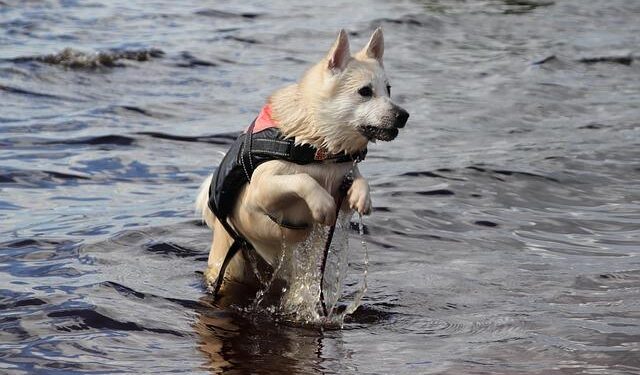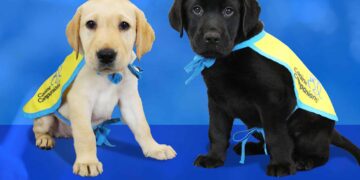Table of Contents
As a small animal veterinary technician with over a decade of experience, I’ve seen my share of emergencies, from late-night surgeries to complex diagnostic procedures.1
But some of the most frustrating cases aren’t the dramatic ones.
They’re the silent, preventable ones.
I’ll never forget Winston, a bright-eyed French Bulldog whose owner brought him in for a routine check-up.
Winston was wearing a trendy red sweatshirt with a clever slogan, a gift from his loving family.
He looked adorable.
But when I gently slipped the sweatshirt off, my heart sank.
His armpits and chest were raw, inflamed, and weeping—a painful, advanced case of contact dermatitis and severe chafing.
Winston’s owner was heartbroken.
They’d followed all the standard advice, bought what they thought was a quality product, and had no idea their attempt to keep him warm and stylish was causing him so much pain.
This wasn’t an isolated incident.
In my clinical practice, I’ve seen a quiet epidemic of discomfort caused by poorly designed pet apparel.
Vets consistently cite rubbing, stress, and overheating as major concerns with dog clothing.3
These issues often lead to chronic skin diseases, secondary bacterial infections, and a significant decline in a dog’s quality of life.4
The professional frustration became deeply personal when I adopted my own dog, Buster.
He’s a rescue mutt with the deep chest of a boxer and the narrow waist of a hound—a biomechanical puzzle.
My journey to find him a simple sweatshirt was a maddening cycle of buying and returning.
Garments that fit his chest were baggy and bunched at his waist.
Those that fit his length were painfully tight across his shoulders, restricting his gait.
I followed every sizing chart, measuring his neck, chest, and length with precision, but the results were always the same: discomfort.6
I was a veterinary professional, an expert in canine anatomy, and I couldn’t even buy a functional sweatshirt for my own dog.
That’s when I realized the problem wasn’t my dog or my measuring tape.
The problem was the entire philosophy behind how dog apparel is made.
We’ve been taught to look for cute designs and simple measurements, but this approach is fundamentally flawed.
This report is the culmination of my journey—from a frustrated vet tech to an advocate for a new standard.
It will provide a new way forward, a framework that moves beyond superficial advice and treats dog apparel with the seriousness it deserves: as a piece of technical equipment that can either enhance or harm your dog’s well-being.
Part 1: The Anatomy of a Bad Fit: Why Most Dog Sweatshirts Fail Our Dogs
Before we can find the right solution, we must deeply understand the problem.
The issue with most dog sweatshirts isn’t just that they’re “badly made”; it’s that they are designed from a perspective that ignores the three critical aspects of a dog’s well-being: their skin, their body mechanics, and their psychological state.
The Clinical Perspective: A Vet Tech’s Case Files
In the clinic, the evidence of poor apparel design presents itself in very real, painful ways.
As vet techs, we are on the front lines, providing nursing care, monitoring patients, and educating owners—and we often see the direct consequences of a bad clothing choice.8
- Dermatological Disasters: Skin complaints are one of the most common reasons owners seek veterinary care.3 While many factors can cause skin issues, ill-fitting or poorly made clothing is a significant and often overlooked contributor. Constant rubbing from a tight armhole or a rough seam can lead to
chafing, breaking down the skin’s protective barrier. This creates an entry point for bacteria, often resulting in painful pyoderma (bacterial skin infection) that requires antibiotics.4 Furthermore, fabrics that aren’t breathable trap moisture and heat against the skin, creating the perfect warm, damp environment for yeast to thrive and for
hot spots (acute moist dermatitis) to develop.5 I’ve also seen countless cases of
contact dermatitis, an allergic reaction to the dyes, chemical treatments, or synthetic fibers used in low-quality apparel, which are often scrap fabrics from human fast-fashion production.5 - Biomechanical Breakdown: A dog’s body is a marvel of engineering, designed for fluid movement. A poorly fitting sweatshirt acts like a straitjacket, disrupting this natural motion. The most common design flaw is a failure to accommodate the canine shoulder assembly. When a sweatshirt is too tight across the chest, it restricts the scapular glide and forward extension of the front legs. This forces the dog into an unnatural, stilted gait. For a young, healthy dog, this is uncomfortable. For a senior dog with arthritis, it can be agonizing, exacerbating joint pain and accelerating degeneration. The core principle of any pet clothing should be that the animal can still perform all normal behaviors—walk, run, jump, sit, lie down, and relieve themselves—without any restriction, chafing, or circulatory impairment.10 Most sweatshirts on the market fail this basic test.
- The Psychological Toll: Dogs communicate discomfort through subtle body language that owners often misinterpret. When a dog freezes in place, refuses to move, yawns excessively, or repeatedly licks its lips after being put in a sweatshirt, it’s not “being stubborn”.10 These are classic signs of stress and anxiety.11 The dog feels restricted and insecure. In their world, where body language is paramount for communication, having their posture altered by a garment can be deeply unsettling, potentially even affecting their interactions with other dogs who can no longer read their social cues clearly.10
The Owner’s Frustration: Deconstructing the “Standard Advice”
The clinical problems are a direct result of an industry that sets owners up for failure.
The standard advice is simply not good enough.
- The Measurement Myth: Every brand tells you to measure your dog’s neck, chest, and back length.13 While this is a necessary starting point, it’s a deeply flawed system on its own. The numbers on a tape measure cannot capture the reality of a dog’s physical form: the depth of their chest, the density of their fur, their bone structure, or their muscle mass.6 Brands acknowledge this, admitting their size charts are for “average” dogs, yet they continue to produce clothing based on these generic patterns.7 This leads to the universal frustration we see in customer reviews, where a product “runs a little small” for one dog and the exact same size is “very baggy” on another of the same weight.15
- My Failure Story: My experience with Buster perfectly illustrates this myth. I found a highly-rated sweatshirt online. I meticulously measured him—chest girth 30 inches, back length 24 inches. According to the chart, he was a perfect Large. When it arrived, the reality was a disaster. While the length was correct, the fabric pulled so tightly across his deep chest that it visibly constricted his breathing. The armholes were cut too far back, digging into his armpits and preventing him from extending his front legs properly. It was a textbook example of a garment designed for a generic “Large” dog, not my dog. This experience is echoed by countless owners. One review for a popular sweater noted that after years of buying the same brand, the sizing suddenly became “completely off,” rendering both an XS and S unwearable for their Chihuahuas.15 Another lamented that for their 60-pound bully, a Large was so long it had to be removed for potty breaks, while an Extra Large in other brands fit perfectly.15
This widespread, consistent failure points to a much deeper issue.
The problem isn’t just a few bad products or inaccurate size charts.
It’s a systemic, industry-wide failure to apply the most basic principles of ergonomic design to canine apparel.
The industry has been operating on a “fashion-first, function-second” model, essentially shrinking down human clothing patterns and slapping them onto dogs.
This approach treats our dogs not as the diverse, dynamic biological athletes they are, but as furry, four-legged mannequins.
This fundamental flaw is what causes the frustration for owners and the very real harm to our pets.
Part 2: The Human Athlete Analogy: My Epiphany in Performance Apparel
My breakthrough didn’t happen in the veterinary clinic.
It happened in my own closet.
One chilly morning, getting ready for a run, I pulled on my technical running jacket.
As I zipped it up, I was struck by its design.
The elbows were articulated for a natural arm swing.
The panels under the arms were made of a different, stretchier fabric for greater range of motion.
The seams were flat-locked, not raised, to prevent chafing.
The fabric itself was engineered to be lightweight yet warm, and to wick moisture away from my skin.
A lightbulb went off.
This is what Buster needed.
This wasn’t just “clothing”; it was a piece of high-performance equipment designed to enhance, not hinder, my body’s function.
That was my epiphany.
The solution was to completely reframe the problem.
We must stop thinking of dog sweatshirts as “clothes” and start evaluating them as “technical performance gear.”
This shift in perspective changes everything.
It moves us away from asking “Is it cute?” or “What are the measurements?” to asking “Does it perform its function without compromising my dog’s health and well-being?” To understand this, we can borrow directly from the world of human athletic apparel.
- Ergonomics & Biomechanics: Performance gear is built around the science of how a body moves. It’s not just about fitting a static form; it’s about designing for dynamic action.17 This means considering joint articulation, muscle flexion, and natural gait. The goal is to create a garment that feels like a second skin, moving
with the wearer. - Advanced Material Science: Human performance fabrics are engineered marvels. They are textiles specifically designed for durability and to provide physical benefits like moisture management, stain resistance, and thermal regulation.19 Companies like The LYCRA Company have developed sophisticated systems like the PCE™ (Power, Comfort, Energy) Index to scientifically measure a fabric’s ability to provide compression, comfort, and freedom of movement, ensuring it meets the demands of athletes.20 This is the level of material consideration our dogs deserve.
- Safety by Design: The best performance gear is also the safest. Designers proactively engineer out potential hazards. Seams are placed away from high-friction areas. Zippers have “garages” to prevent them from digging into your chin. Reflective elements are integrated for visibility. This proactive approach to safety is a core tenet of quality design.
By adopting this “performance gear” mindset, we arm ourselves with a new, more powerful set of criteria.
We are no longer just consumers buying a product; we are advocates for our dogs’ health, demanding a higher standard of function, safety, and comfort.
Part 3: The Canine Performance Gear Framework: A 3-Pillar System for a Perfect Choice
This new paradigm requires a new method of evaluation.
I’ve developed a three-pillar framework based on my clinical experience and the principles of performance gear design.
This system will empower you to look past the marketing and make an expert choice for your dog.
Pillar 1: Biomechanical Congruence (The Fit)
Fit is the foundation of performance.
A garment that isn’t biomechanically congruent with your dog’s body is a failure, no matter how good the material Is. Static measurements are just the beginning; the real test is a dynamic assessment.
First, take the three baseline measurements: the neck at the base where a collar sits, the chest at its widest point just behind the front legs, and the back from the base of the neck to the base of the tail.6
Now, use these numbers to find a starting size, but the critical work begins when you try the sweatshirt on.
Focus on these key anatomical fit points:
- Shoulders & Chest: This is the most critical area. The garment must allow for a full, unrestricted forward extension of the front legs. For deep-chested or muscular breeds, look for designs with a distinct “V-cut” on the underbody or built-in stretch panels that accommodate their build without pulling or constricting.9
- Armholes (Scyes): The armhole openings must be generous enough to prevent any rubbing or chafing in your dog’s sensitive “armpit” area, a common site for irritation. However, they shouldn’t be so large that your dog could get a leg caught inside. This is why sleeveless or “raglan” sleeve designs, where the seam runs from the underarm to the collar, are often superior for maximizing mobility.16
- Belly & Rear: The cut on the underside must be high enough to leave a clear, unobstructed path for potty breaks for both male and female dogs.16 On the back, the sweatshirt should ideally provide coverage to the base of the tail for maximum warmth, but it must not interfere with natural tail movement or posture.6
- Neckline: The neck opening should be snug enough that it doesn’t slip down over the shoulders, but you should be able to comfortably slide two fingers between the fabric and your dog’s neck.21
This assessment must be tailored to your dog’s unique build.
A sweatshirt that fits a slender Greyhound will not work for a stocky Pug with a broad chest.6
A long-bodied Dachshund requires a different pattern than a square-built French Bulldog.16
The goal is a fit that respects your dog’s individual anatomy.
To make this process systematic, use the following checklist.
If the answer to any of these questions is “No,” the sweatshirt is not a good fit.
Table 1: The Biomechanical Fit Checklist
| Checkpoint | Yes/No |
| Movement: Can my dog walk, trot, and jump without the fabric pulling tightly across the shoulders or chest? | |
| Armholes: Are the armhole openings completely clear of the armpits, with no fabric rubbing or digging in? | |
| Posture: Can my dog sit and lie down comfortably without the fabric bunching up around the neck or twisting around the torso? | |
| Potty Area: Is the underside cut high enough to be completely clear of the urinary stream for both male and female dogs? | |
| Coverage: Does the sweatshirt lie flat along the back without gapping or restricting tail movement? | |
| Neck Fit: Can I comfortably fit two fingers under the neckline without it being too loose or too tight? |
Pillar 2: Advanced Material Science (The Fabric)
Fabric is not an aesthetic choice; it is functional equipment.
The cheap, thin, non-stretch fabrics used in much of the dog apparel market are often leftovers from the human fast-fashion industry and can be rough and irritating.9
A performance-oriented approach demands premium, human-grade fabrics chosen for specific functional properties.
Look for these key performance metrics:
- Thermal Regulation: The primary job of a sweatshirt is to provide warmth, but this must be balanced with breathability. Fabrics like fleece and wool are excellent insulators for cold weather.13 However, without breathability, a dog—especially one with a thick natural coat—can quickly overheat.24 Cotton is breathable but a poor choice for wet conditions, as it absorbs moisture and loses its insulating properties, which can dangerously chill a dog.23
- Moisture Management: For active dogs or in damp climates, look for polyester blends with moisture-wicking properties. These fabrics pull moisture away from the skin to the surface of the garment where it can evaporate, keeping your dog dry and comfortable.19
- Durability & Washability: A dog’s sweatshirt needs to withstand zoomies, wrestling, and frequent machine washing. Look for tightly woven fabrics that resist pilling and reinforced stitching that won’t unravel.9
- Stretch & Recovery: A small amount of spandex (often 3-5%) blended with the primary fabric is a game-changer. It provides the flexibility needed for a comfortable fit and ease of dressing, and it helps the garment retain its shape over time without bagging or sagging.20
- Hypoallergenic Properties: For dogs with sensitive skin or allergies, fabric choice is a medical decision. Natural, breathable fibers like organic cotton (free of pesticides) or bamboo (which has natural antibacterial properties) are excellent choices.23
This table breaks down the performance of common fabrics to help you make an informed trade-off based on your dog’s lifestyle and needs.
Table 2: Canine Material Performance Index
| Fabric Type | Insulation | Breathability | Durability | Moisture-Wicking | Stretch | Best For |
| 100% Cotton | ★★☆☆☆ | ★★★★★ | ★★★☆☆ | ★☆☆☆☆ | ★★☆☆☆ | Casual indoor wear, dogs with skin sensitivities in dry conditions. |
| Fleece (Polyester) | ★★★★★ | ★★★☆☆ | ★★★★☆ | ★★★★☆ | ★★★☆☆ | Cold, dry days; active dogs needing warmth and breathability. |
| Wool | ★★★★★ | ★★★★☆ | ★★★★☆ | ★★★★★ | ★★★☆☆ | Extremely cold conditions; provides warmth even when damp. |
| Poly/Spandex Blend | ★★★☆☆ | ★★★★☆ | ★★★★★ | ★★★★★ | ★★★★★ | All-around performance, active dogs, layering, durability. |
| Acrylic | ★★★★☆ | ★★☆☆☆ | ★★☆☆☆ | ★★☆☆☆ | ★★★★☆ | Inexpensive warmth, but less breathable and durable than fleece. |
Pillar 3: Hazard-Proof by Design (The Safety)
This pillar represents a critical shift in responsibility.
Unlike children’s clothing, which is subject to stringent government safety regulations, the pet apparel industry is largely a Wild West.27
This means the burden of safety assessment falls squarely on you, the owner.
The best way to approach this is to apply the well-established principles of child safety to your dog’s apparel.
This is a powerful way to re-evaluate products, moving from a reactive to a proactive safety mindset.
- Choking & Ingestion Hazards: Children’s clothing standards go to great lengths to prevent hazards from small, detachable parts.28 Before buying any dog sweatshirt with buttons, decorative beads, pom-poms, or other embellishments, test them yourself. Pull on them. Twist them. If they feel loose or flimsy, they pose a serious choking risk to a dog who might chew or ingest them. Opt for sweatshirts with minimal, securely attached hardware or, even better, designs with no small parts at all.
- Strangulation & Entanglement Hazards: This is a non-negotiable safety red line. Child safety standards strictly regulate or outright ban drawstrings around the head and neck area due to the clear risk of strangulation.28
You should apply this same standard and avoid any dog hoodie with a functional drawstring around the neck. Beyond strangulation, these cords pose an entanglement risk if they get caught on furniture, crate wiring, or branches. There is also a play-specific hazard: another dog may see the cord or even the hood itself as a toy, leading to dangerous tugging and potential injury.30 - Chemical Safety: The chemicals used in textile production, such as azo dyes and formaldehyde finishing agents, can be potent skin irritants.28 While regulations for pet products are lax, you can minimize risk by choosing brands that explicitly state they use pet-safe, non-toxic materials.14 Washing a new garment before the first wear can also help reduce surface irritants. This directly addresses the clinical issue of contact dermatitis I see so often.5
Finally, remember that supervision is the ultimate safety tool.
Even the most well-designed garment can pose a risk if it gets snagged.
Always remove sweatshirts before your dog goes to sleep or is left unsupervised in a crate.12
Part 4: The Vet Tech’s Audit: Putting the Framework into Practice
Now, let’s put the Canine Performance Gear Framework to the test.
I’ll walk you through how I “audit” products, showing you how to think like an expert and separate the true performance gear from the fashionable failures.
The Success Story: Finding “The One”
After my frustrating search for Buster, I finally found a sweatshirt that passed my rigorous audit: the Ellie Dog Wear Zip Up.16
It became the blueprint for what I now recommend to clients.
- Pillar 1 (Fit) Audit: The Ellie hoodie excels here. Its size chart proved accurate, and the design demonstrates a true understanding of canine anatomy. The fit is versatile, with a cut that is cropped on the belly for potty clearance but runs longer down the back for optimal coverage.16 This thoughtful, potty-friendly design is a hallmark of a brand that has actually tested its products on real, active dogs. It fit Buster’s deep chest without constricting him and didn’t bunch up at his waist.
Result: PASS. - Pillar 2 (Material) Audit: The first thing you notice is the quality. It’s made from a thick, durable material with tight, reinforced stitching.16 The fabric feels substantial, like a high-quality human sweatshirt, providing excellent warmth and withstanding Buster’s tendency to roll around in the grass. The metal zipper is robust and glides easily, a small detail that speaks volumes about the quality of the components used.16
Result: PASS. - Pillar 3 (Safety) Audit: The design is inherently safe. It has no dangerous drawstrings. The only additions are functional and secure: a well-placed leash opening and a velcro back pocket that keeps items safely tucked away.16 The high-quality construction means components are less likely to break off and become choking hazards.
Result: PASS.
This sweatshirt is a perfect example of the performance gear philosophy.
It prioritizes function, fit, and safety, resulting in a product that genuinely enhances my dog’s comfort and well-being.
The Cautionary Tales: Where Common Sweatshirts Fail the Audit
Now let’s look at a few common examples that fail the audit, highlighting the red flags you should watch for.
- The “Fashion-First” Fail: The Fitwarm Puppy Pullover is undeniably stylish, with trendy stripes and cute ¾ sleeves.16 However, it fails the audit on multiple fronts.
- Pillar 1 (Fit) Failure: The ¾ sleeves, while a cute design choice, are a biomechanical liability. The extra fabric can easily irritate dogs who aren’t used to clothing, causing them to chew or scratch at the garment. Furthermore, the brand only makes clothing for small dogs, completely excluding a huge portion of the canine population and failing the basic principle of inclusivity.16
- Pillar 3 (Safety) Potential Failure: While not explicitly stated, fashion-forward items often include decorative elements that could pose choking hazards. This design prioritizes a human aesthetic over canine comfort and safety.
- The Sizing Nightmare: The Vibrant Life Spoiled Dog Hooded Sweater from Walmart is a classic example of a Pillar 1 failure due to inconsistent manufacturing and design.15
- Pillar 1 (Fit) Failure: Customer reviews are a mess of contradictions. Some say it “runs a little small,” while others complain a Large is “so long” and “very baggy” on their 60-pound dog.15 One loyal customer reported that the sizing, once reliable, is now “completely off”.15 This indicates a brand without rigorous quality control or a consistent, ergonomic pattern. When you can’t trust the sizing from one batch to the next, it’s impossible to make an informed choice.
- Pillar 2 (Material) Failure: Reviewers describe the material as “slightly scratchy” and “on the thin side,” questioning its ability to provide real warmth.15 This is a garment that fails on both fit and its primary function.
- The Hidden Hazard: Any sweatshirt you find with a long, dangling drawstring around the hood is an immediate and absolute Pillar 3 (Safety) Failure. It doesn’t matter how well it fits or what material it’s made from. The strangulation and entanglement risk is simply too high to justify.28
Conclusion: A Commitment to Comfort and Care
Our journey began in the clinic, with the preventable suffering of a French Bulldog named Winston.
It took me through the personal frustration of trying to find a simple, functional sweatshirt for my own beloved dog, and it led to an epiphany that changed my entire perspective.
The path to choosing the right sweatshirt is not about finding the cutest design or the cheapest price.
It’s about a fundamental paradigm shift: we must treat these garments as technical performance gear, holding them to the same high standards of fit, function, and safety that we expect from our own athletic apparel.
By using the Canine Performance Gear Framework, you are now equipped to be your dog’s best advocate.
You can look beyond the marketing and critically assess any product through the three pillars: Biomechanical Congruence, ensuring the fit allows for natural, unrestricted movement; Advanced Material Science, choosing fabrics that are engineered for warmth, breathability, and durability; and Hazard-Proof by Design, applying the rigorous principles of child safety to protect your pet from hidden dangers.
Choosing the right sweatshirt is more than just a purchase.
It is an act of love.
It is a component of providing excellent preventative healthcare.
Armed with this new framework, you can navigate the crowded market with the confidence of an expert, making a choice that truly protects, comforts, and honors the four-legged family member who depends on you for everything.
Works cited
- Veterinary Technician (For Small Animals): Career Profile, Employment Outlook, and Education Requirements – Learn.org, accessed August 14, 2025, https://learn.org/articles/Veterinary_Technician_For_Small_Animals_Career_Profile_Employment_Outlook_and_Education_Requirements.html
- What Do Vet Techs Do? | Penn Foster, accessed August 14, 2025, https://www.pennfoster.edu/blog/what-does-a-vet-tech-do
- Dressing up dogs leading to rise in skin complaints – Direct Line Group, accessed August 14, 2025, https://www.directlinegroup.co.uk/en/news/brand-news/2017/dressing-up-dogs-leading-to-rise-in-skin-complaints.html
- Canine skin autoimmune diseases | Cornell University College of Veterinary Medicine, accessed August 14, 2025, https://www.vet.cornell.edu/departments-centers-and-institutes/riney-canine-health-center/canine-health-information/canine-skin-autoimmune-diseases
- 8 Common Dog Coat and Skin Conditions Explained – Clipit Grooming, accessed August 14, 2025, https://www.clipit-grooming.com/post/8-common-dog-coat-and-skin-conditions-explained
- Sizing – Oscar Newman LLC, accessed August 14, 2025, https://oscarnewman.com/pages/sizing
- Sizing Your Dog’s Sweater – SPARK PAWS, accessed August 14, 2025, https://www.sparkpaws.com/blogs/community/sizing-your-dogs-sweater
- What Does a Vet Tech (or Vet Nurse) Do? – College of Veterinary Medicine, accessed August 14, 2025, https://vet.purdue.edu/nursing/articles/what-does-a-vet-tech-or-vet-nurse-do.php
- 5 Essential Considerations When Buying Dog Clothes: – SPARK …, accessed August 14, 2025, https://www.sparkpaws.com/blogs/community/what-to-look-for-when-buying-dog-clothes
- Choosing Safe and Comfortable Pet Clothing – One Health Organization, accessed August 14, 2025, https://www.onehealth.org/blog/choosing-safe-and-comfortable-pet-clothing
- Why do dogs not like it when people wear hoodies? – Quora, accessed August 14, 2025, https://www.quora.com/Why-do-dogs-not-like-it-when-people-wear-hoodies
- Dog Clothing: Is It Harmful or Helpful? – Squishface, accessed August 14, 2025, https://squishface.com/blogs/blog/dog-clothing-is-it-harmful-or-helpful
- 7 Must-Know Tips on How Do I Choose a Dog Sweater – Both Tails, accessed August 14, 2025, https://bothtails.com/blogs/news/7-must-know-tips-on-how-do-i-choose-a-dog-sweater
- 7 Essential Tips for Choosing Dog Clothing – Kwik Pets, accessed August 14, 2025, https://www.kwikpets.com/blogs/dog/7-essential-tips-for-choosing-dog-clothing
- Customer reviews for Vibrant Life Spoiled Dog Hooded Sweater …, accessed August 14, 2025, https://www.walmart.com/reviews/product/5559338609
- The 8 Best Dog Hoodies | Tested & Rated – Tech Gear Lab, accessed August 14, 2025, https://www.techgearlab.com/topics/home/best-dog-hoodie
- Importance & Impact of Ergonomics – Apparel Resources, accessed August 14, 2025, https://apparelresources.com/business-news/manufacturing/ergonomics-in-apparel-manufacturing-i/
- Ergonomics Process for the Care and Use of Research Animals | ILAR Journal, accessed August 14, 2025, https://academic.oup.com/ilarjournal/article/44/1/3/651967
- Performance Fabric by the Yard | Durable Activewear – Mood Fabrics, accessed August 14, 2025, https://www.moodfabrics.com/fashion-fabrics/other-fabrics/tech-fabrics
- LYCRA® SPORT Fabric Technology: Performance Fabrics for …, accessed August 14, 2025, https://www.lycra.com/en/business/search-technologies/lycra-sport-fabric-technology
- Dog Clothing Size Guide, accessed August 14, 2025, https://millamilla.net/pages/size
- modaknits.com, accessed August 14, 2025, https://modaknits.com/what-is-the-best-fabric-for-dog-clothes/#:~:text=The%20best%20fabric%20for%20dog%20clothes%20depends%20on%20the%20weather,nylon%20are%20great%20for%20rainwear.
- What is the best fabric for dog clothes? – Clothing Manufacturer – Modaknits Apparel, accessed August 14, 2025, https://modaknits.com/what-is-the-best-fabric-for-dog-clothes/
- Should Your Dog Wear a Sweater All Day? What Pet Owners Need to Know – Fitwarm, accessed August 14, 2025, https://www.fitwarm.com/blogs/news/should-your-dog-wear-a-sweater-all-day-what-pet-owners-need-to-know
- How to Care for Your Dog’s Hoodie: Cleaning and Maintenance Tips – Fitwarm, accessed August 14, 2025, https://www.fitwarm.com/blogs/news/how-to-care-for-your-dogs-hoodie
- Hooded Sweatshirts For Dogs: Embrace Sweater Weather and Get Your Dog Hello Fall Ready – Wag Trendz, accessed August 14, 2025, https://www.wagtrendz.com/blogs/dog-tales-blog-news/dog-hoodies
- Children’s Clothing Safety Requirements: How AJG Helps Your Children’s Apparel Brand, accessed August 14, 2025, https://ajgfashionconsulting.com/blog/childrens-clothing-safety-requirements-how-ajg-helps-your-childrens-apparel-brand
- Children’s Apparel – Product Safety Guidelines – National Retail …, accessed August 14, 2025, https://www.nationalretail.org.au/resource/childrens-apparel-product-safety-guidelines/
- Essential Safety Tips for Children’s Clothing – Mon Coeur, accessed August 14, 2025, https://moncoeur.com/blogs/our-blog/essential-safety-tips-for-childrens-clothing
- is it cruel to put clothes on dogs? – Reddit, accessed August 14, 2025, https://www.reddit.com/r/dogs/comments/t8cmot/is_it_cruel_to_put_clothes_on_dogs/






